Genus HystrixLinnaeus, 1758 Scientific name Hystrix brachyura Rank Species | Phylum Chordata Family Hystricidae Subgenus Acanthion Higher classification Hystrix | |
Similar Hystrix, Mammal, Asiatic brush‑tailed porcupine, Brush‑tailed porcupine, Rodent | ||
Malayan porcupine
The Malayan porcupine or Himalayan porcupine (Hystrix brachyura) is a species of rodent in the family Hystricidae. Three subspecies are extant in South and South-east Asia.
Contents
- Malayan porcupine
- Malayan porcupines
- Geographical distribution
- Sub species
- Evolution
- Habitat and ecology
- Characteristics
- Diet
- Behaviour
- Conservation and economic importance
- References
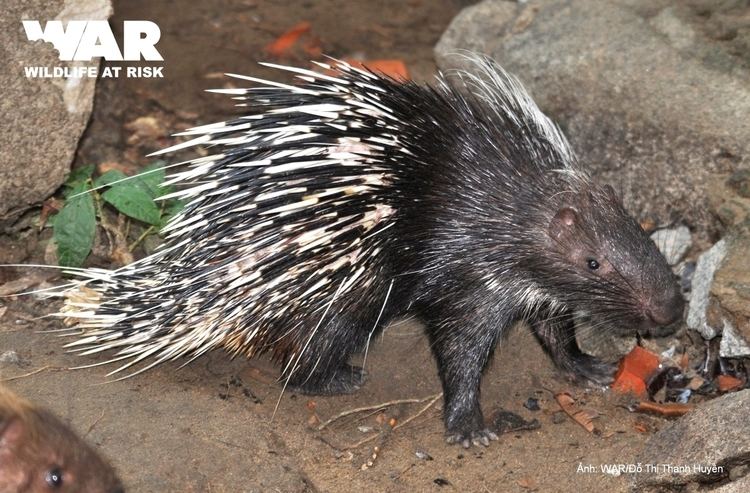
Malayan porcupines
Geographical distribution
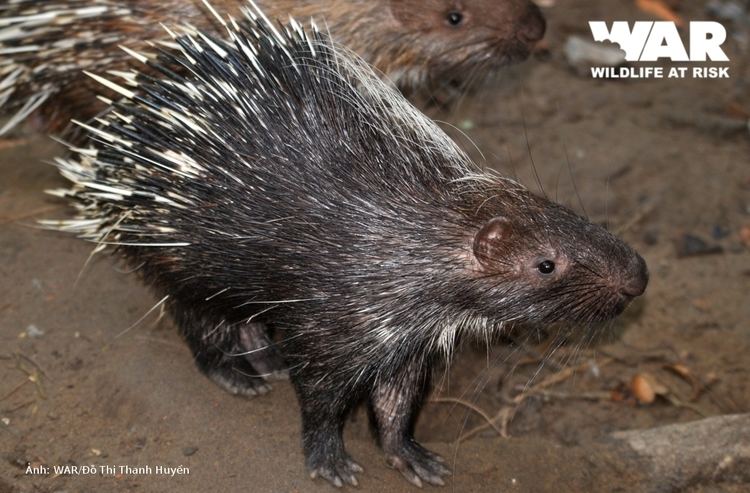
The Malayan porcupine ranges from Nepal through North-east India (Arunachal Pradesh, Sikkim, West Bengal, Manipur, Mizoram, Meghalaya and Nagaland), to central and southern China (Xizang, Hainan, Yunnan, Sichuan, Chongqing, Guizhou, Hunnan, Guangxi, Guangdong, Hong Kong, Fujian, Jianxi, Zhejiang, Shanghai, Jiangsu, Anhui, Henan, Hubei, Shaanxi, Gansu), throughout Myanmar, Thailand, Lao PDR, Cambodia and Vietnam, through Peninsular Malaysia, to Singapore, Sumatra (Indonesia) and throughout Borneo (Indonesia, Malaysia, Sarawak and Brunei). It is also present on the island of Penang, Malaysia. It can be found from sea level to at least 1,300 m asl.
Sub-species
See list in the taxobox
Evolution
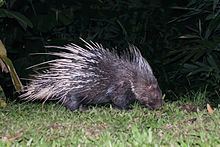
This species and its close relatives is believed to have originated from southern Asia based on their current distribution. Their origin may lie from a common Late Pleistocene ancestor when Sumatra, Borneo and Palawan were part of Sundaland.
Habitat and ecology
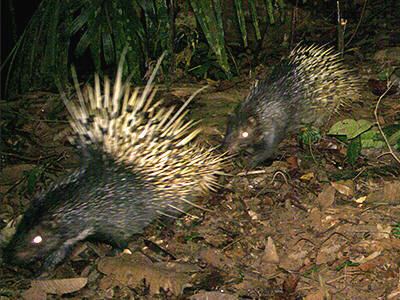
It is found in various types of forest habitats as well as open areas near forests. It may stray into nearby agricultural areas. It digs into the ground and inhabits dens near rocky areas, where it lives in small groups. It has a gestation period of 110 days and a litter size of two or three. The species may give birth to two litters annually. Their habitat is terrestrial where they are living in the hole of tree barks or roots. It also living in a burrow, from which a network of trails penetrate into surrounding habitat. It can be found in all forest types up to 1500m.
Characteristics
It is a large and stout bodied rodent covered with quills which are sharp, rigid structures. The quills/spines are modified hair. The quills or spines on their upper body parts are rough with black and white or yellowed stripe in color. The young’s soft quills become hard as they enter adulthood. It has short stocky legs covered in brown hairs which have four claws on the front and five on the hind legs. Both front and hind legs have smooth soles.The head and body measurement are around 63-72.5 cm and their tail is about 6–11 cm. Their weight is around 0.7 kg-2.4 kg
Diet
They normally feed on roots, tubers, bark and fallen fruits. They also eat carrion and insects.
Behaviour
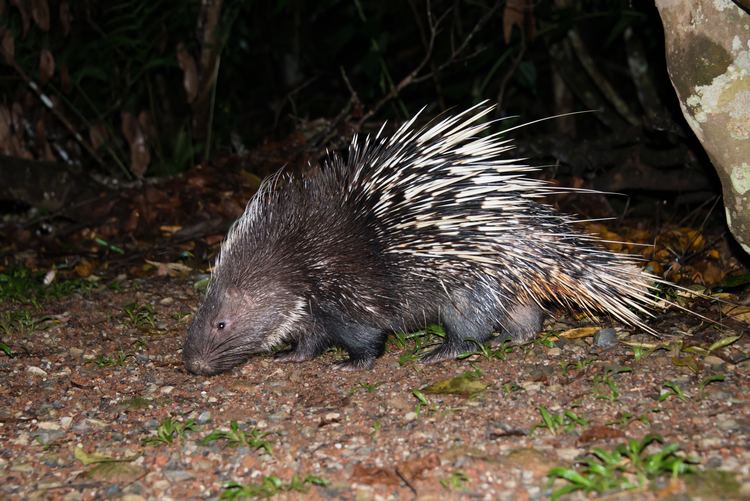
H. brachyura is nocturnal. It forages at night and rests during the day. It may be found singly or in pairs. It can also cans swim and can gnaw. The sow usually delivers a single pup at a time but delivering two pups has also been recorded. The gestation period is about 90 to 112 days. The maximum longevity of their life is about 27 years.
Conservation and economic importance

IUCN has categorized this species as Least Concern (LC) species. The quills of the Malayan porcupine are used for ornamental purposes. They are also hunted for meat.

